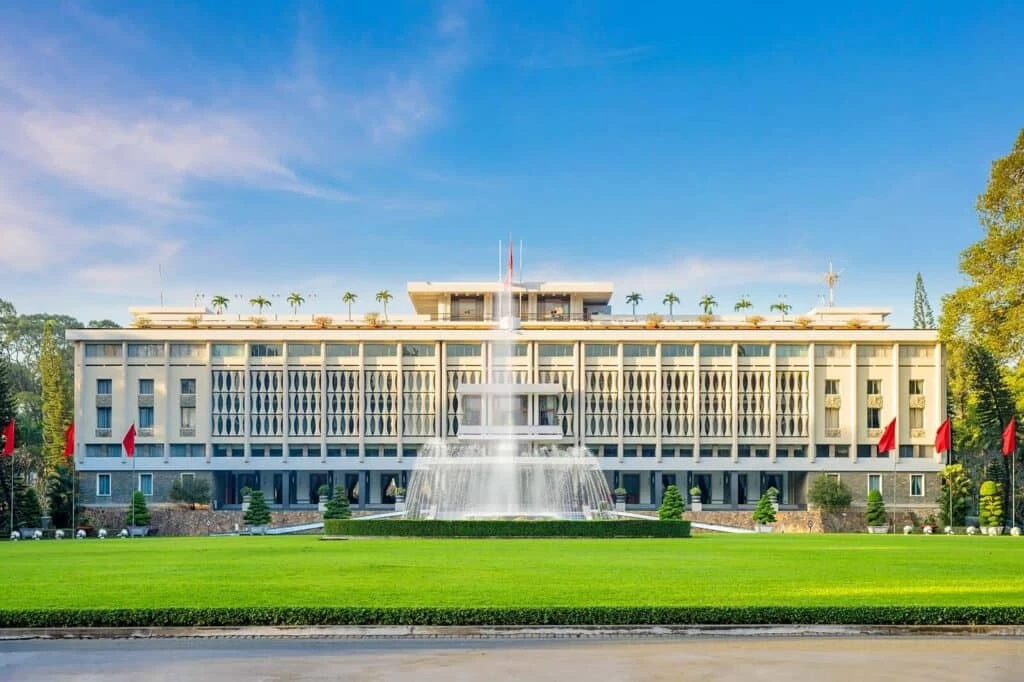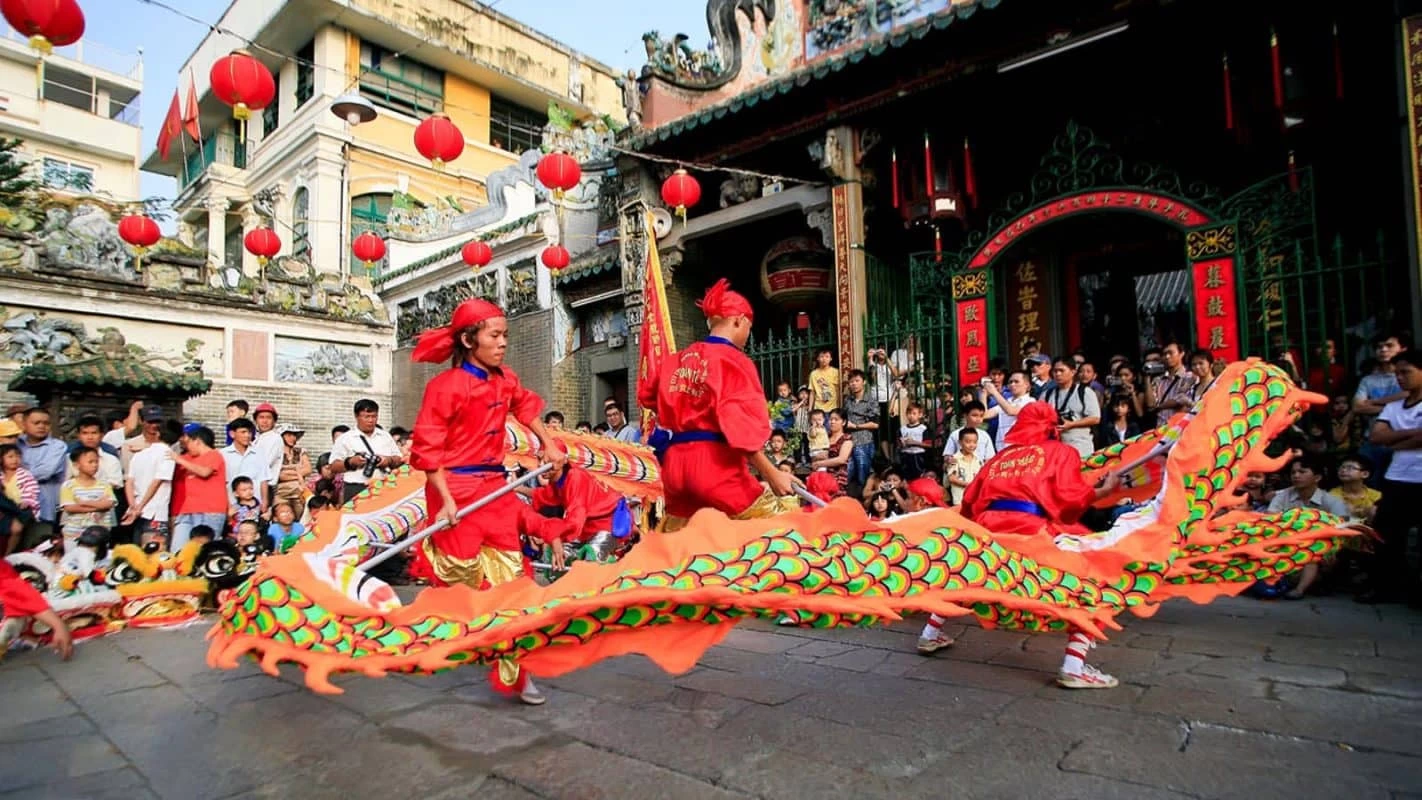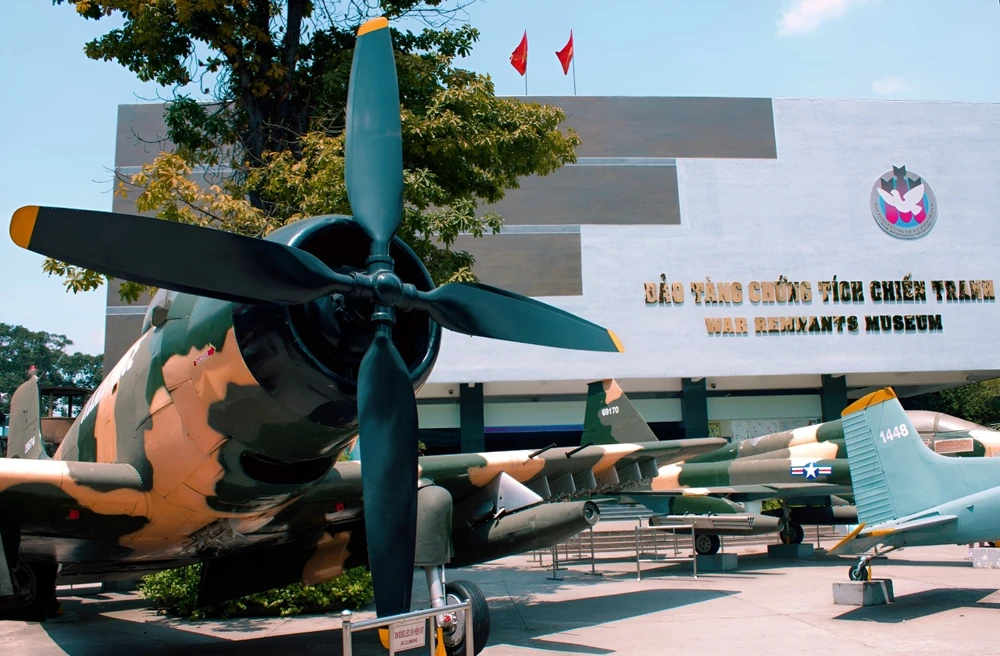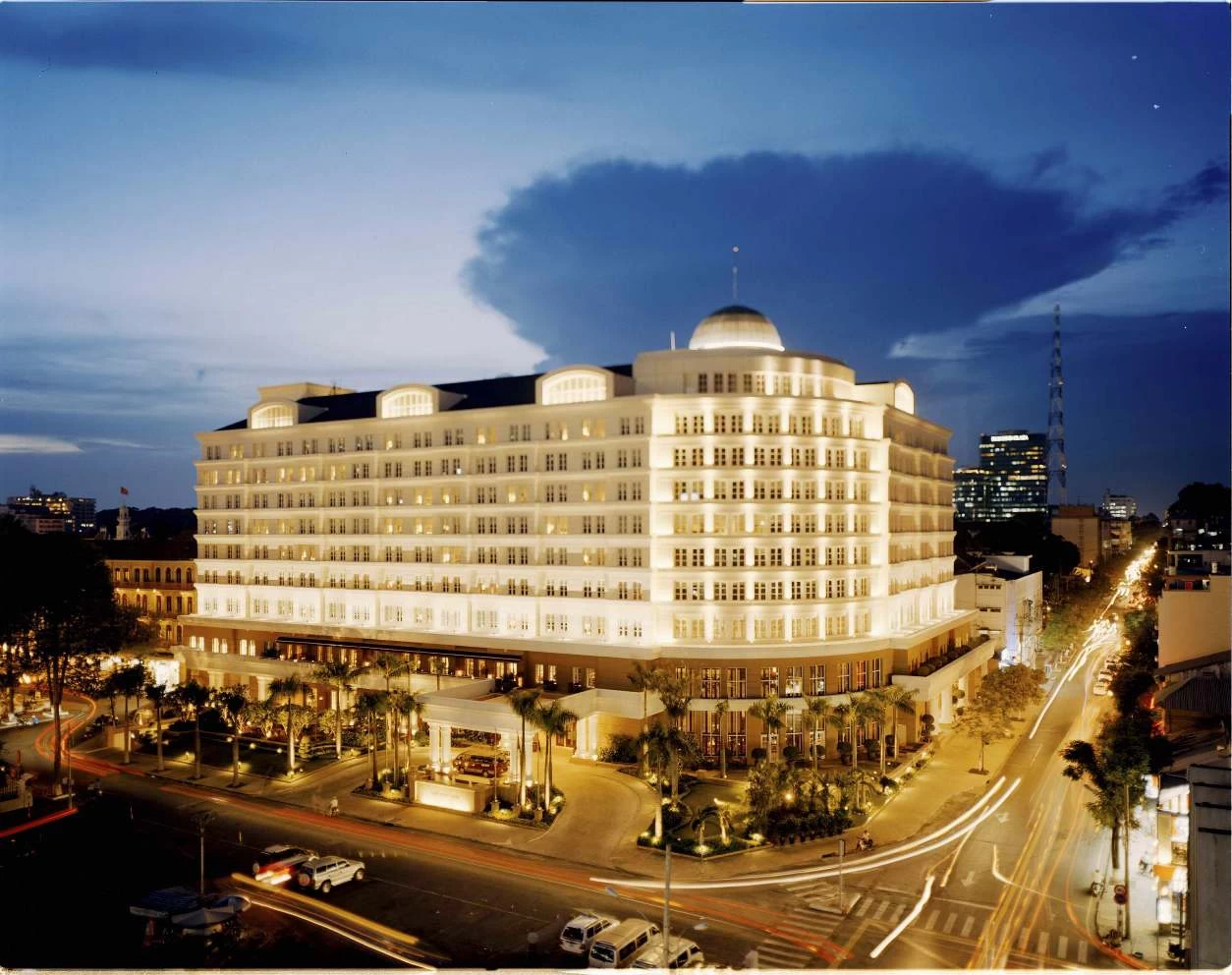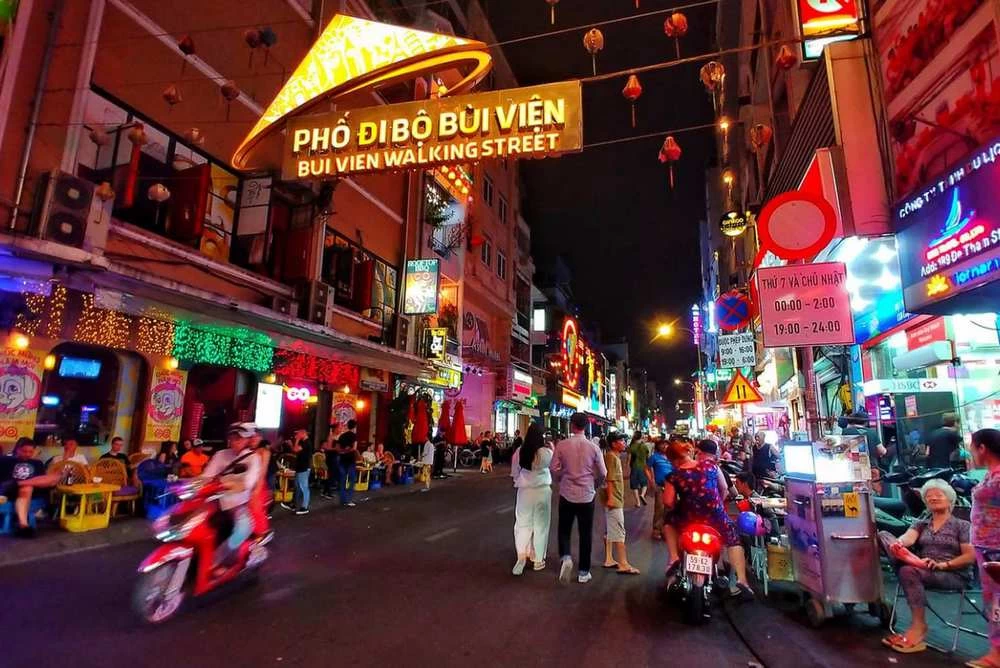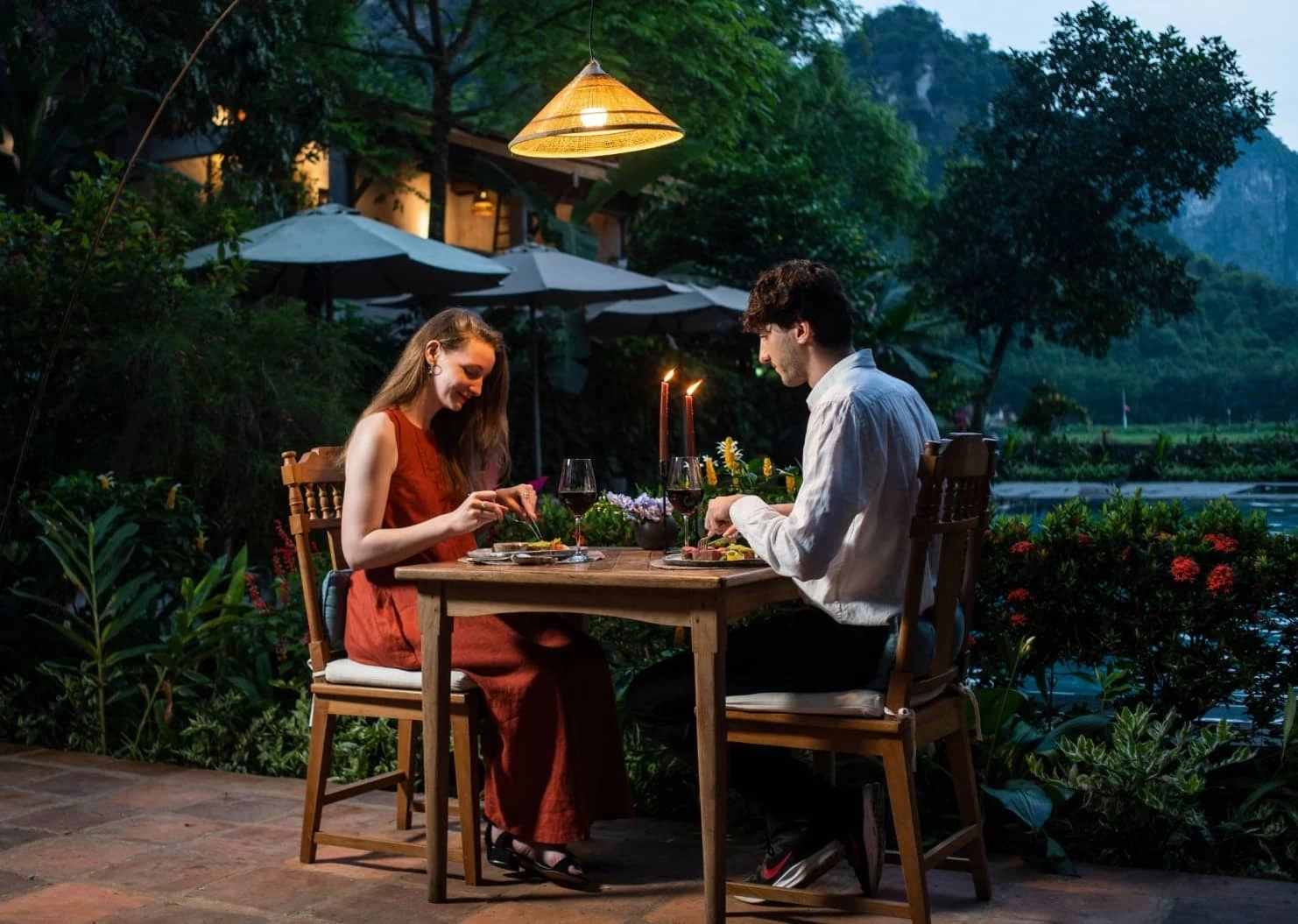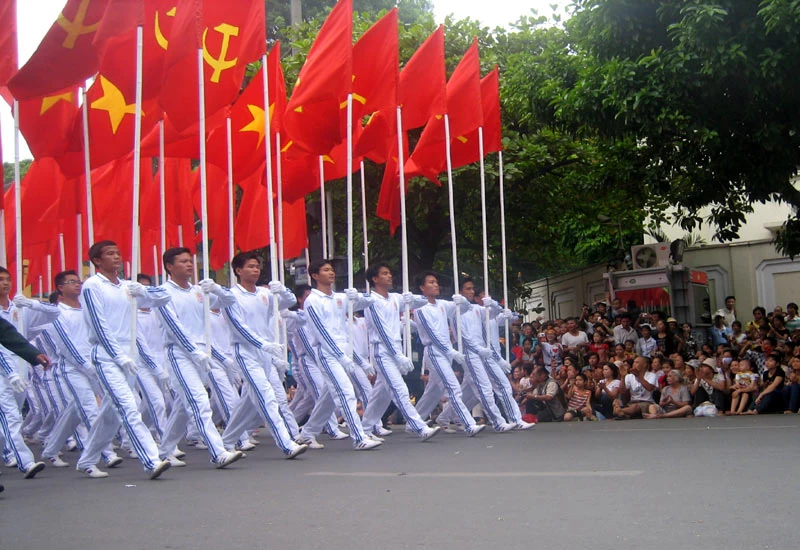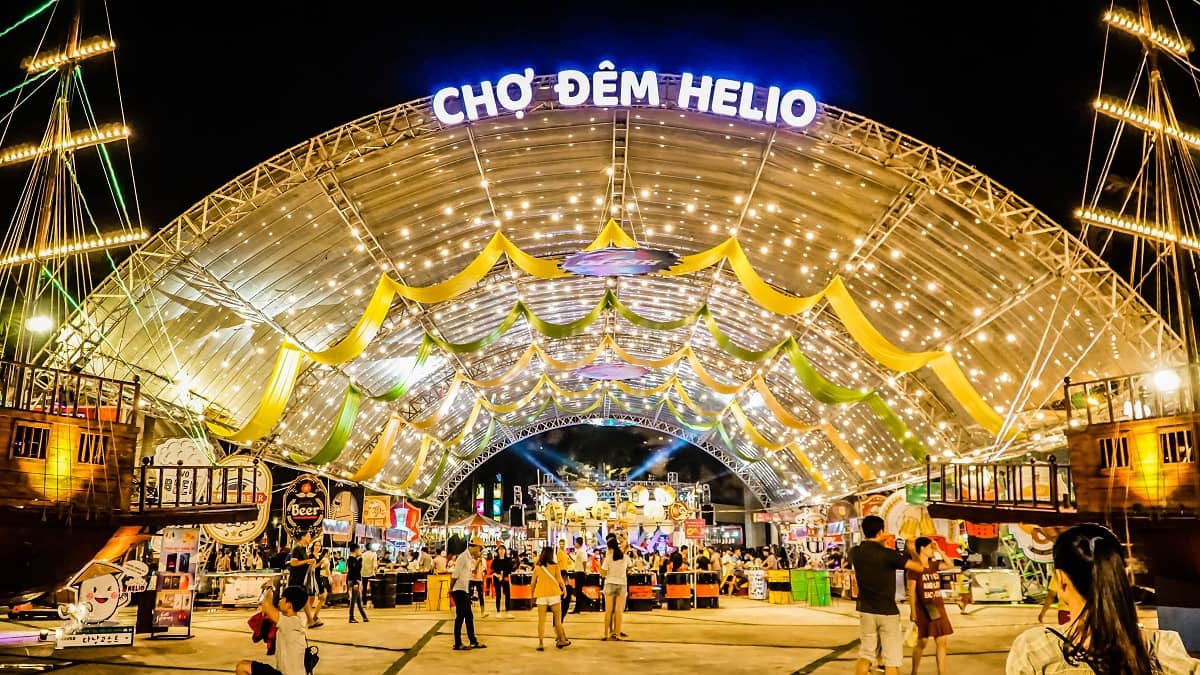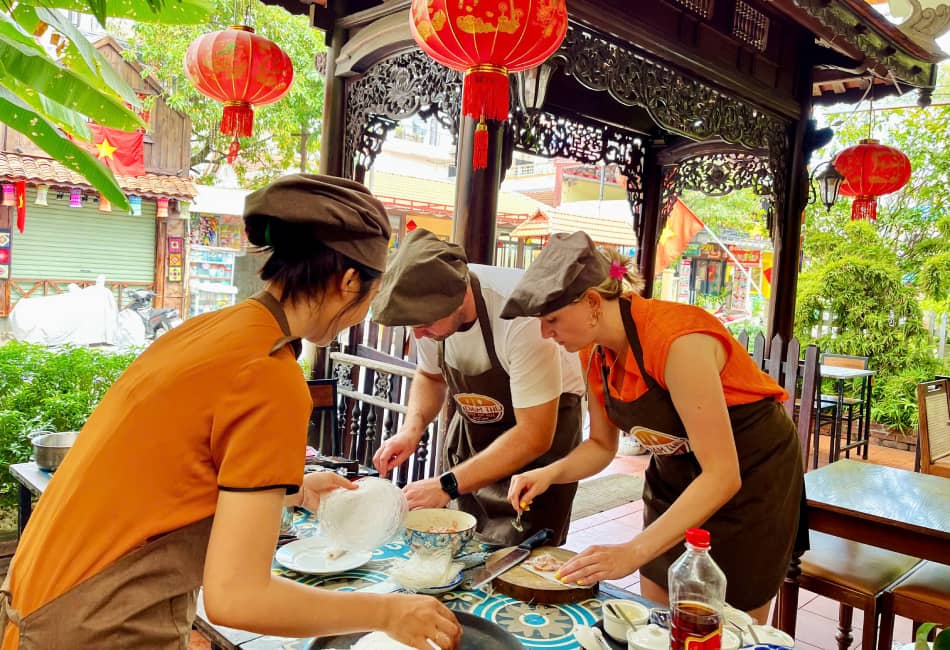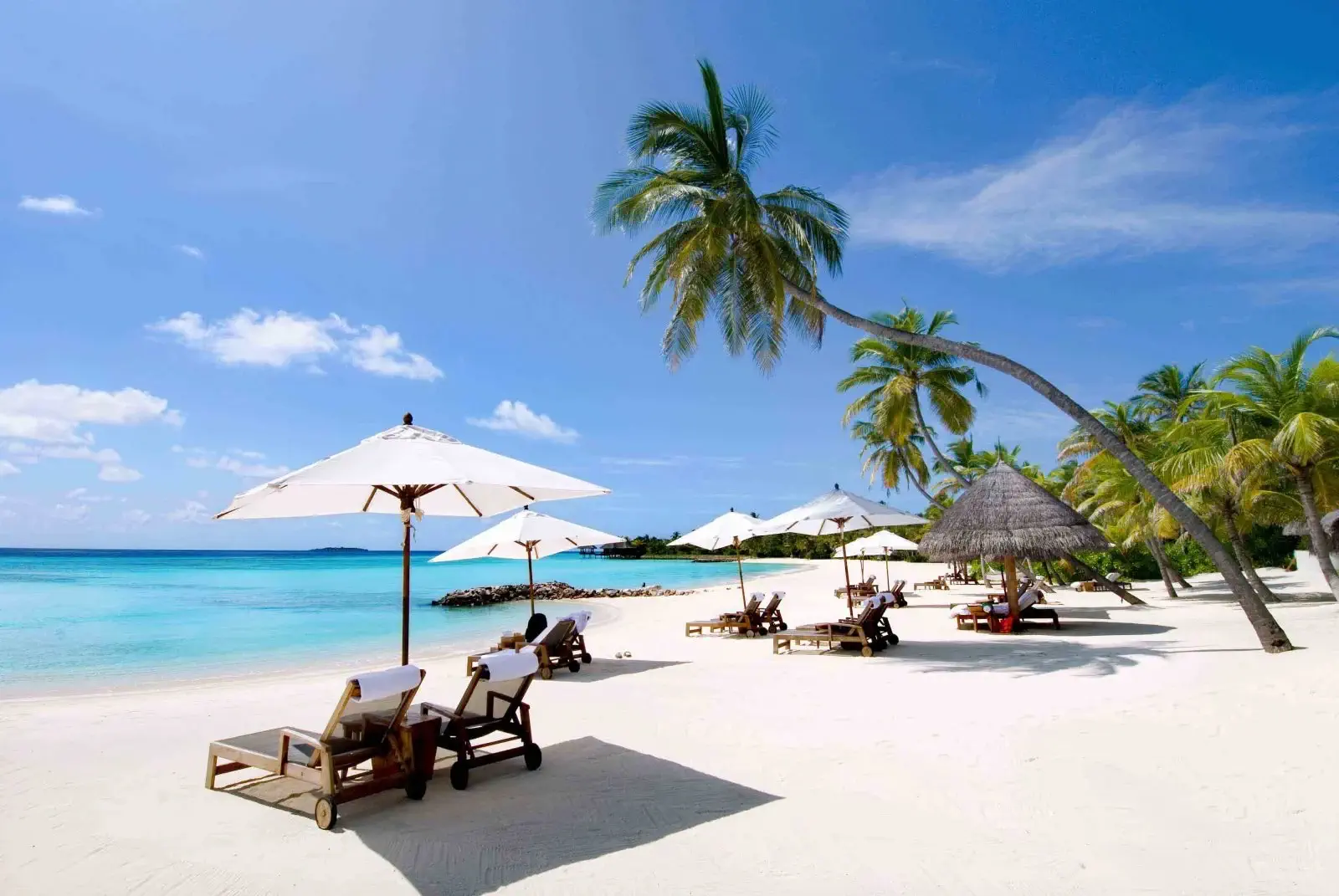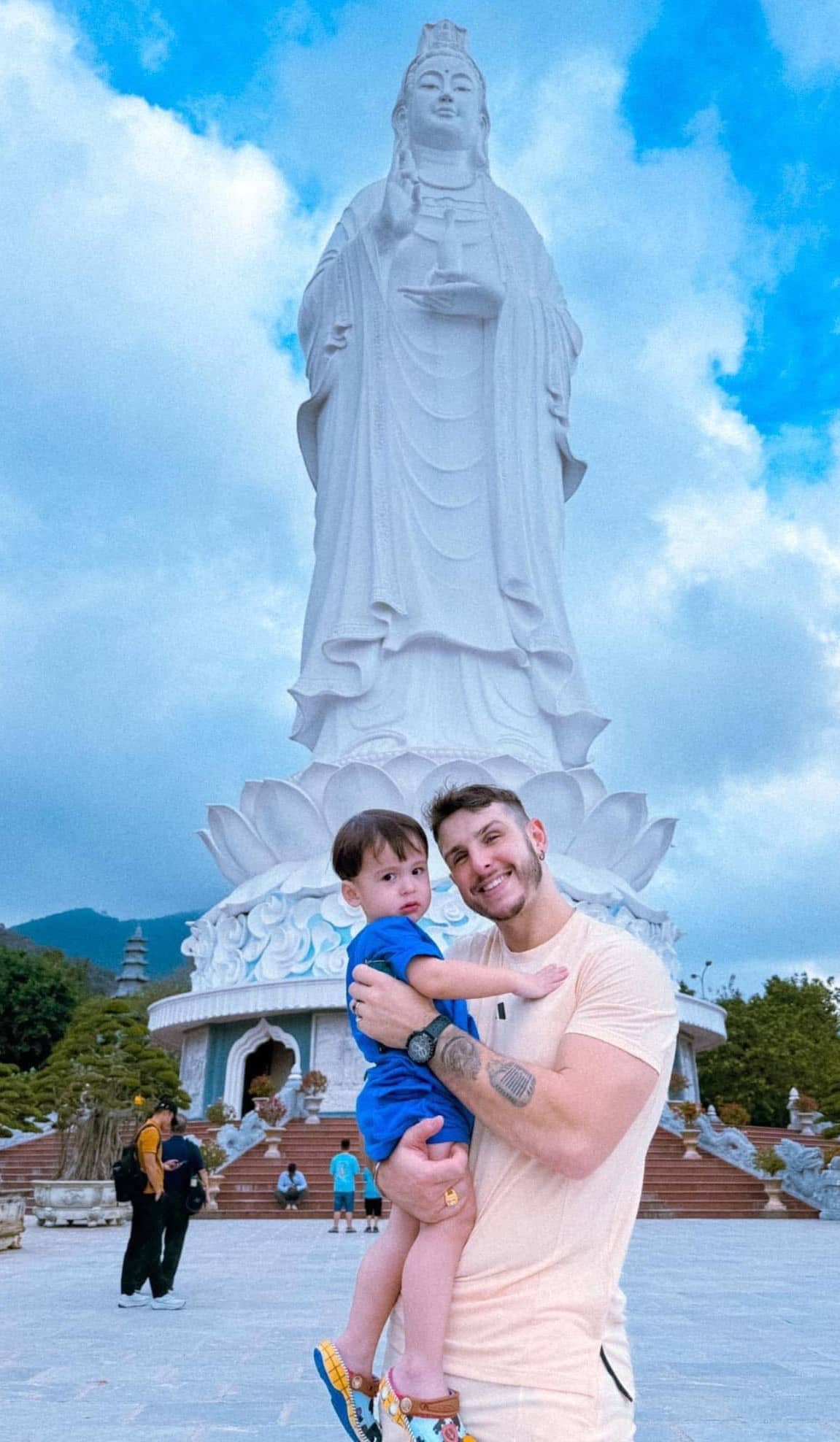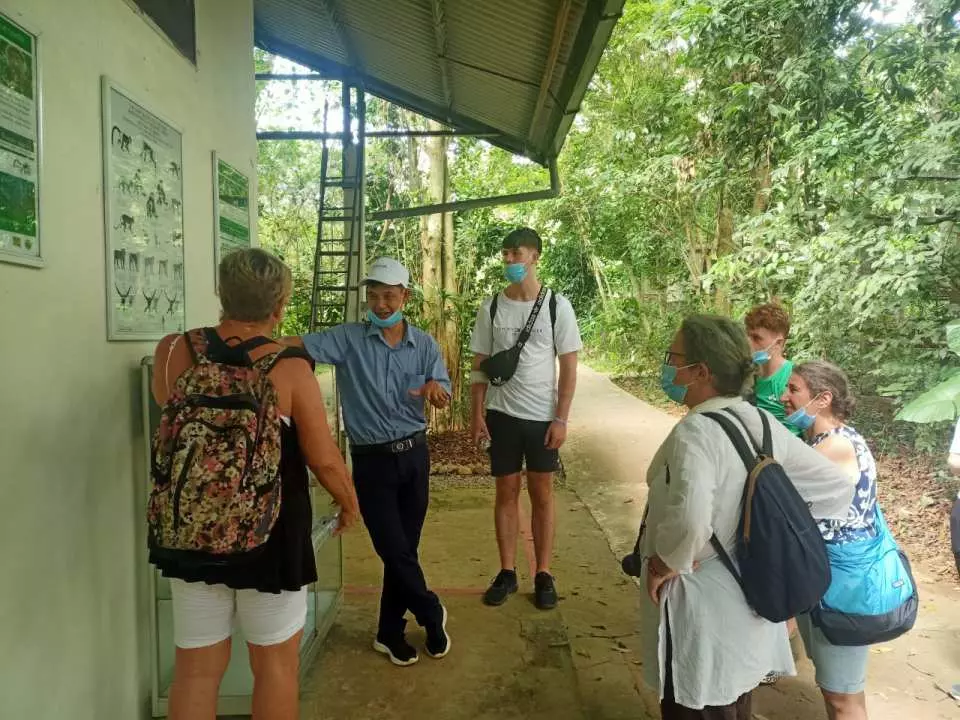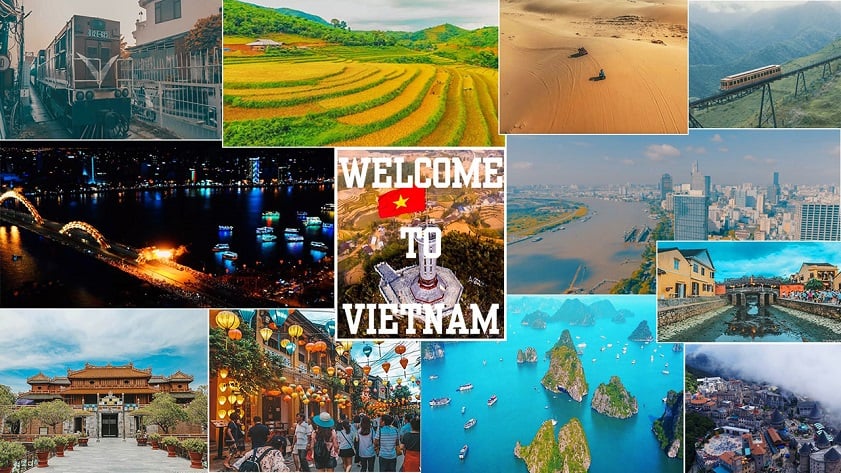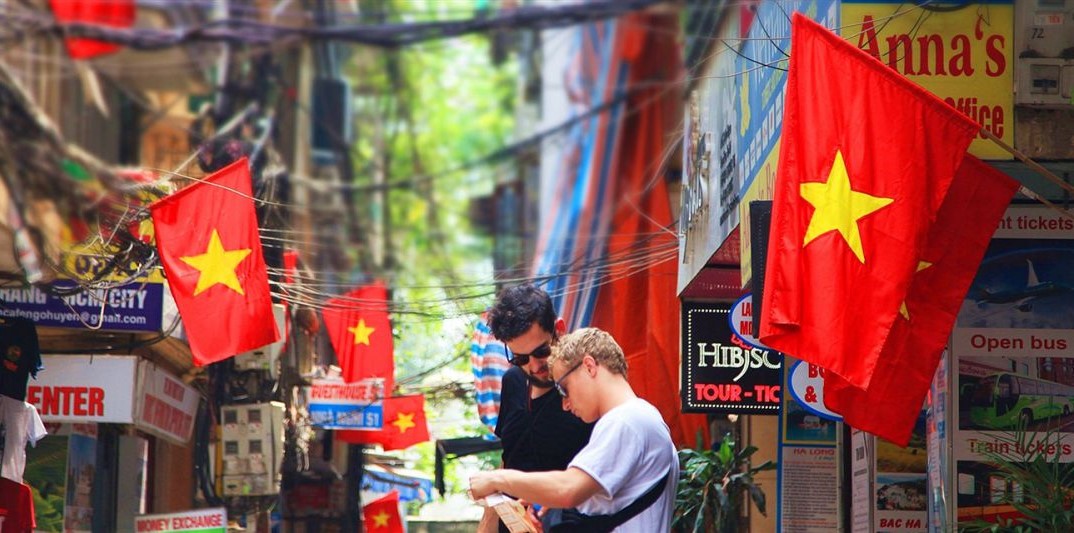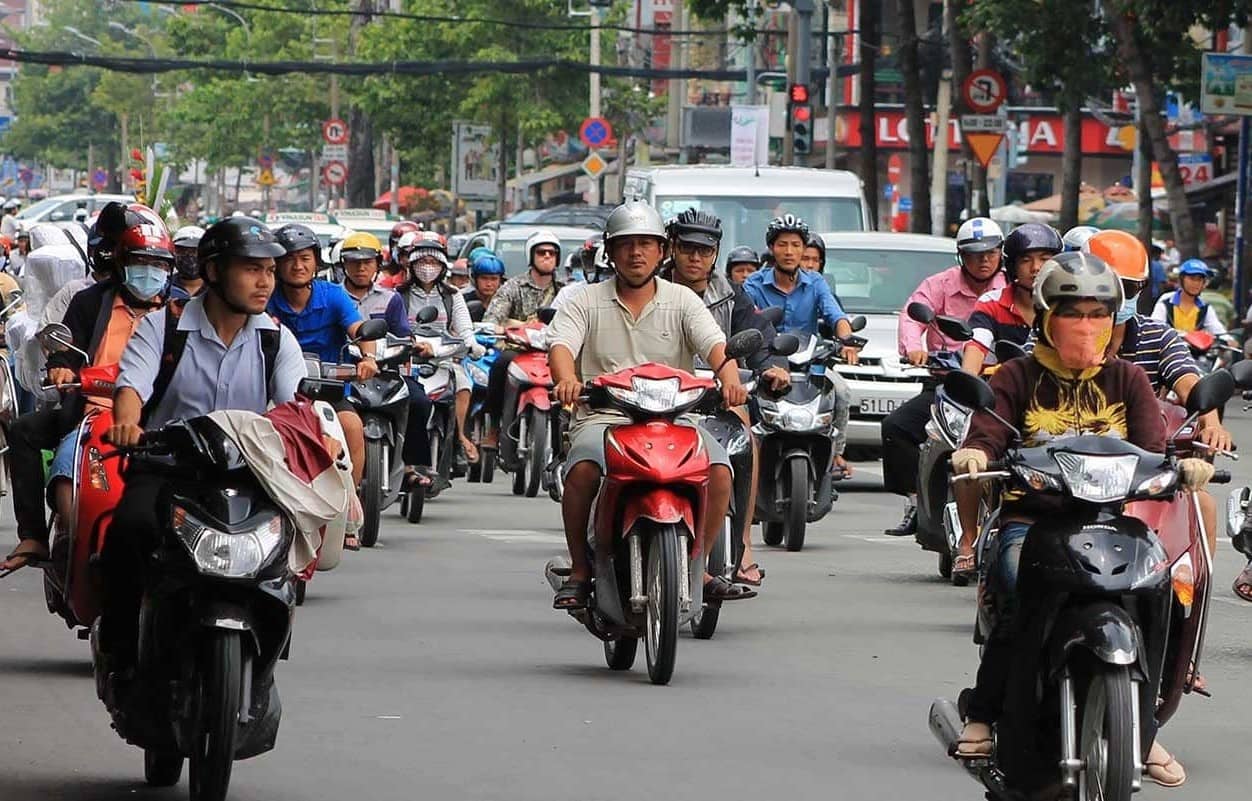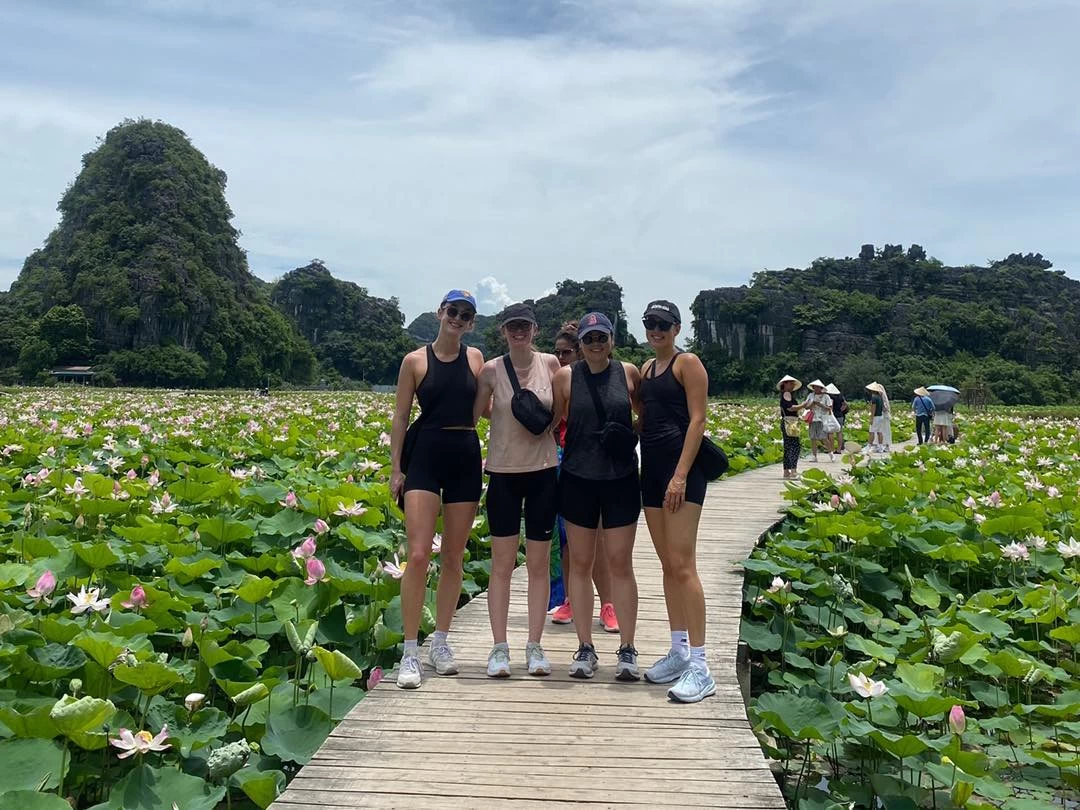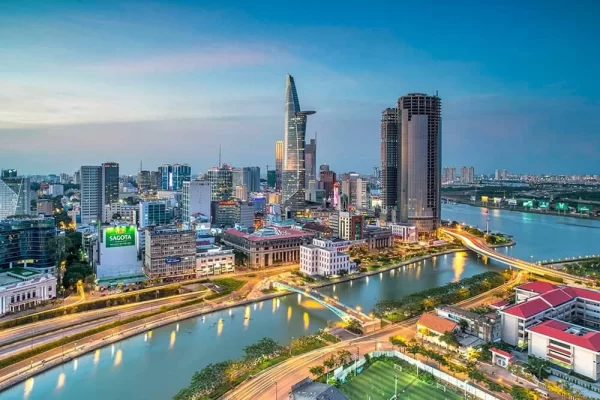
Let’s find out about Ho Chi Minh City Weather preparing for your trip!
Discover everything you need to know about Ho Chi Minh City weather! Explore the city’s tropical climate, from the sunny dry season to the refreshing rainy months. Get essential travel tips and packing advice to make the most of your visit to this vibrant destination.
I. Ho Chi Minh City Climate Overview
Ho Chi Minh City experiences a tropical monsoon climate, which is characterized by two distinct seasons: the dry season and the rainy season. This climate type is typical for cities located near the equator, resulting in warm temperatures throughout the year.
1. Dry Season (November to April)
The dry season is marked by clear skies, low humidity, and minimal rainfall. During this period, the weather is relatively stable, with plenty of sunshine and pleasant breezes. This is considered the best time to visit the city, as outdoor activities are more enjoyable without the interference of sudden showers.
2. Rainy Season (May to October)
The rainy season, also known as the monsoon season, brings frequent and heavy downpours. Rain typically occurs in the form of short, intense showers in the afternoon or evening. Although the rain can be heavy, it usually clears up quickly, leaving behind humid conditions. Travelers should be prepared for the increased chance of rain, but can still enjoy indoor activities and sightseeing.
3. Average Temperature
Ho Chi Minh City maintains consistently warm temperatures year-round. The average temperature ranges from 25°C to 35°C (77°F to 95°F). The hottest months are generally March and April, when temperatures can reach up to 36°C (97°F), making it feel particularly hot in the urban areas. Even during the cooler months of December and January, temperatures rarely drop below 21°C (70°F), ensuring a warm climate for visitors.
4. Humidity and Rainfall
Due to its tropical climate, Ho Chi Minh City experiences high humidity throughout the year, typically hovering between 75% and 85%. Humidity peaks during the rainy season, making the air feel warmer and sometimes oppressive.
The city receives an annual average rainfall of around 1,800 millimeters (71 inches), most of which falls during the rainy season. The wettest months are usually July and September, when rainfall is heaviest. Travelers visiting during this time should expect frequent rain showers, but these typically do not last long, allowing for some clear intervals throughout the day.
II. Ho Chi Minh City Weather by Season
1. Dry Season (November to April)
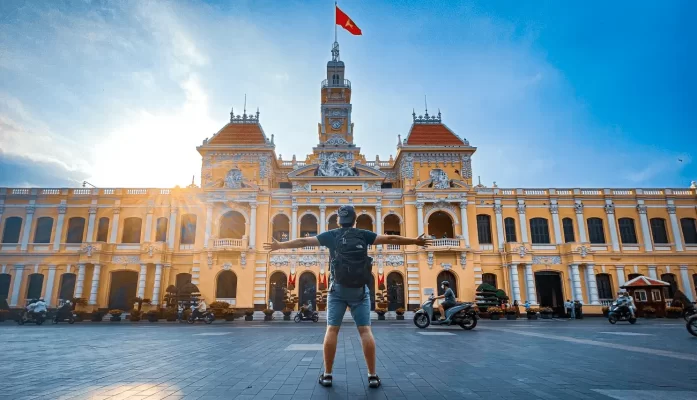
The dry season in Ho Chi Minh City is suitable for sightseeing and outdoor activities
The dry season in Ho Chi Minh City is characterized by sunny skies, minimal rainfall, and consistently warm temperatures. During this period, the city experiences relatively stable weather, with average temperatures ranging from 25°C to 35°C (77°F to 95°F), making it a pleasant time to explore. The humidity is lower compared to the wet season, and rain showers are rare, allowing visitors to enjoy outdoor activities without much interruption.
Ideal Conditions for Tourism:
This is the best time for sightseeing, as the dry season offers clear, sunny days perfect for walking tours, visiting historical landmarks, or cruising along the Saigon River. The lack of rain means you can easily explore vibrant markets, scenic parks, and bustling streets without the worry of weather disruptions.
Click here: Ho Chi Minh City Tour
2. Rainy Season (May to October)
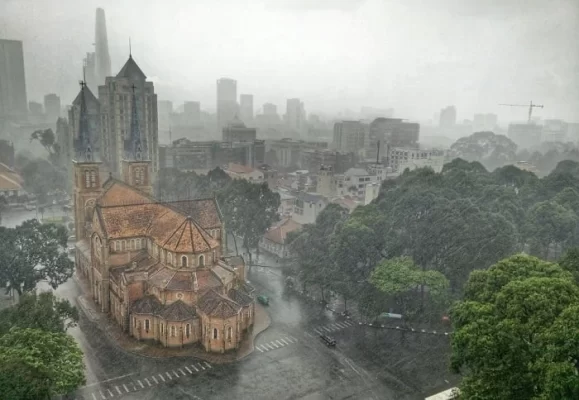
Ho Chi Minh City in the rainy season
The rainy season in Ho Chi Minh City is marked by frequent rainfall, often in the form of sudden, heavy downpours. These rain showers typically occur in the afternoon and can last anywhere from a few minutes to several hours.
Despite the rain, temperatures remain warm, ranging from 24°C to 33°C (75°F to 91°F), and the city’s lush greenery flourishes during this time. Although it rains often, the wet weather rarely affects the entire day, with mornings and evenings usually staying dry.
Tourist Activities During the Rainy Season:
While outdoor plans may need adjustments, the rainy season still offers plenty of enjoyable experiences.
- Indoor Attractions: Visit Ho Chi Minh City’s fascinating museums, such as the War Remnants Museum or the Ho Chi Minh City Museum, which provide cultural insights in a sheltered setting.
- Shopping and Dining: Explore indoor shopping malls like Vincom Center or Saigon Centre, where you can also enjoy a diverse range of international and local cuisine.
- Culinary Experiences: Rainy days are perfect for trying hot, flavorful Vietnamese dishes like pho or bun rieu in cozy restaurants.
III. Best Time to Visit Ho Chi Minh City
The best time to visit Ho Chi Minh City is from December to March, when the weather is at its most pleasant. During this period, temperatures are cooler and the humidity is lower, making it an ideal time for outdoor activities and sightseeing.
The average daytime temperatures range between 21°C (70°F) and 32°C (89°F), providing a comfortable climate for exploring the city’s attractions. Additionally, this time of year sees less rainfall compared to the rainy season, ensuring that visitors can enjoy dry and sunny conditions.
IV. What to Pack for Each Season in Ho Chi Minh City
1. For the Dry Season (November to April)
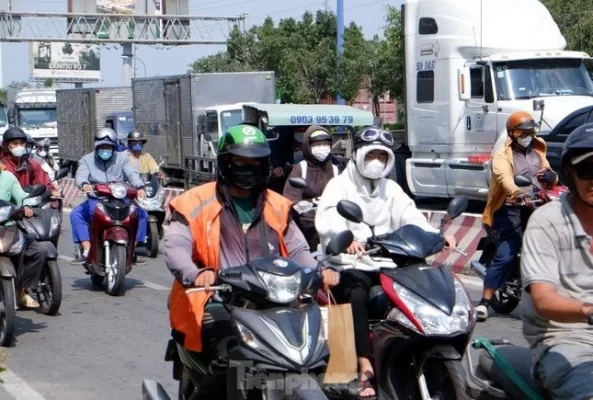
You should shield well in the dry season in Ho Chi Minh City
During Ho Chi Minh City’s dry season, temperatures are warm, and there’s very little rain, making it an ideal time for outdoor exploration. Here’s what you should pack to stay comfortable:
- Light and breathable clothing: Opt for loose-fitting, lightweight fabrics like cotton or linen to stay cool in the warm weather. T-shirts, shorts, dresses, and skirts are perfect for daytime activities.
- Comfortable footwear: You’ll likely be doing a lot of walking while sightseeing, so comfortable walking shoes or sandals are essential. Choose footwear that is breathable and easy to wear for long hours.
- Sunglasses: The sun can be quite strong, so a pair of UV-protective sunglasses will help protect your eyes and keep you comfortable outdoors.
- Hat or cap: A wide-brimmed hat or a simple cap is a great way to shield yourself from the sun’s rays, especially during the peak hours of the day.
- Sunscreen: With plenty of sunshine throughout the dry season, make sure to pack sunscreen with at least SPF 30 to protect your skin from sunburn and UV damage. Reapply throughout the day, especially if you’re spending time outdoors.
2. For the Rainy Season (May to October)
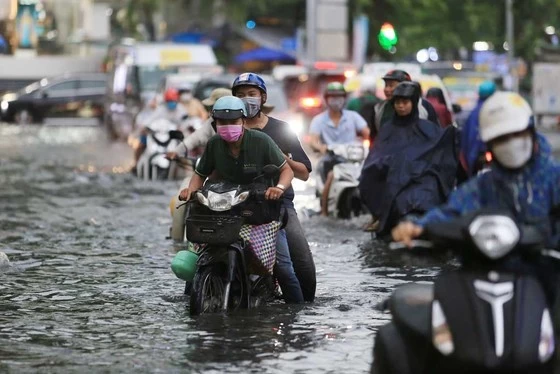
The roads are often flooded due to heavy rain in Ho Chi Minh City
The rainy season in Ho Chi Minh City brings frequent downpours, though they are often short-lived. The key to packing for this time of year is to be prepared for sudden showers while still staying cool in the tropical heat.
- Light waterproof jacket: Pack a lightweight, water-resistant jacket that will keep you dry without making you too hot. A foldable jacket that you can easily carry around in your bag is ideal.
- Umbrella: A compact travel umbrella is a must-have during this season. It will help you deal with unpredictable rain showers without taking up much space in your daypack.
- Waterproof footwear: Consider bringing shoes that can handle wet conditions, such as waterproof sneakers, slip-on rain shoes, or sandals designed for water. These will keep your feet dry and comfortable while walking through puddles or during rainy weather.
- Quick-dry clothing: Opt for materials that dry quickly, like synthetic blends, especially for shirts, pants, and even undergarments. These fabrics will help you stay comfortable if you get caught in the rain and will dry fast after washing.
V. Impact of Weather on Popular Tourist Activities in Ho Chi Minh City
1. December to April: Ideal for Outdoor Exploration
During the dry season, Ho Chi Minh City offers ideal conditions for outdoor activities, making it the perfect time for tourists to explore the city’s numerous attractions under clear skies and pleasant temperatures. One of the most popular activities is cruising along the Saigon River, where visitors can take in stunning views of the city’s skyline while enjoying a peaceful boat ride. This is a great opportunity to see famous landmarks like the Bitexco Financial Tower and the bustling harbor area.
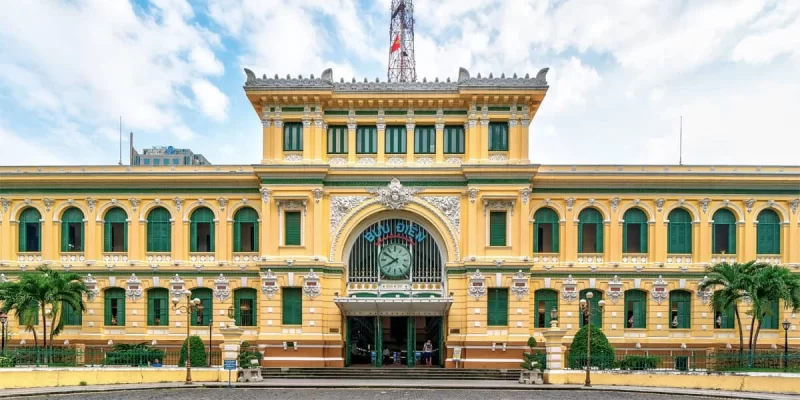
Saigon Central Post Office
For those interested in Vietnam’s history, a visit to the Cu Chi Tunnels is a must during the dry season. The dry weather makes it easier to navigate through the narrow underground tunnels that played a significant role during the Vietnam War. Exploring these tunnels provides a fascinating glimpse into the resilience and ingenuity of the Vietnamese soldiers.
Walking tours around central Ho Chi Minh City are also popular in the dry season, as the cooler morning and late afternoon temperatures provide a comfortable atmosphere for wandering through landmarks like the Notre Dame Cathedral, Saigon Central Post Office, and Reunification Palace.
Learn more about: Cu Chi Tunnels Half Day Tour
2. May to November: Indoor Attractions and Unique Experiences
While the rainy season in Ho Chi Minh City is characterized by frequent afternoon downpours, it doesn’t put a damper on the city’s vibrant tourism scene. Many activities shift indoors, allowing visitors to explore the city’s rich culture, art, and cuisine without worrying about the rain.

War Remnants Museum
The rainy season is a perfect time to immerse yourself in the local café culture. Ho Chi Minh City is home to numerous unique and charming coffee shops, where you can enjoy traditional Vietnamese coffee while watching the rain outside. Popular cafés such as The Workshop, L’usine, and Saigon Coffee Roastery offer not just great coffee but also a cozy atmosphere.
For a deeper cultural experience, visitors can spend time at the city’s museums, such as the War Remnants Museum and the Vietnamese History Museum, where you can explore Vietnam’s past in a climate-controlled environment. These museums provide insightful exhibitions about the country’s rich history and its complex relationship with colonialism and war.
VI. Extreme Weather Conditions and How to Stay Safe
While Ho Chi Minh City generally experiences mild weather patterns, the occasional extreme conditions during the rainy season can affect travel plans. Although tropical storms or typhoons rarely make landfall directly in the city, their peripheral effects can lead to heavy downpours and flooding. Tourists should always stay updated on weather alerts, especially between May and November, when the monsoon season is at its peak.
Here are some practical safety tips to consider when navigating Ho Chi Minh City during periods of heavy rain or flooding:
1. Monitor Local Weather Updates
- Keep an eye on weather forecasts and updates from reliable sources, such as local news channels or weather apps. Many apps provide real-time alerts that can inform you of potential storms or heavy rain. Local authorities may also issue warnings about flooding in certain areas of the city, especially low-lying regions.
2. Avoid Traveling During Peak Rainfall
- If heavy rain is predicted, plan your outdoor activities for the morning, as thunderstorms and downpours often occur in the late afternoon or evening. In case of extreme weather, it’s best to stay indoors at your hotel, a café, or a shopping mall until the rain subsides.
3. Be Cautious of Flood-Prone Areas
- Some districts in Ho Chi Minh City, particularly the central areas like Districts 1 and 5, may experience localized flooding during heavy rain. Walking or riding motorbikes through flooded streets can be hazardous due to hidden potholes or open manholes. Stick to main roads or wait until the water recedes before venturing out.
4. Use Reliable Transportation
- During periods of heavy rain or flooding, avoid walking long distances and instead opt for safer transportation options. Taxi services or ride-hailing apps like Grab are widely available and offer a safer alternative. Be cautious when using motorcycle taxis in the rain, as slippery roads can make riding dangerous.
5. Pack Smart for Rainy Weather
- Always carry a compact umbrella or a lightweight raincoat when exploring the city during the rainy season. Waterproof shoes or sandals are also a smart choice to avoid wet feet and slipping hazards. Consider wearing quick-dry clothing that can handle sudden showers and avoid heavier materials that may become uncomfortable when wet.
6. Be Prepared for Power Outages
- While rare, heavy storms may cause temporary power outages in certain areas of the city. Make sure your phone is charged, and carry a portable charger to stay connected. Most large hotels and shopping centers are equipped with backup generators, so seeking shelter there during intense storms can be convenient.
In conclusion, understanding the weather in Ho Chi Minh City is essential for an enjoyable visit. The city experiences a tropical climate with two main seasons: the dry season from December to April, characterized by warm, sunny days, and the rainy season from May to November, which brings frequent afternoon showers. Travelers should pack accordingly; lightweight clothing and sun protection are crucial for the dry season, while waterproof gear is advisable during the rainy months.
Regardless of when you visit, staying informed about the weather forecast will help you plan your activities effectively. With the right preparation, you can fully appreciate the vibrant culture, delicious cuisine, and warm hospitality that Ho Chi Minh City has to offer year-round.
See more: Ho Chi Minh City Travel Tips




